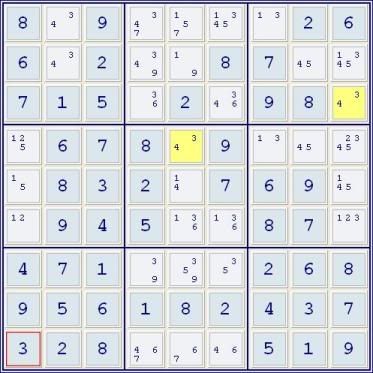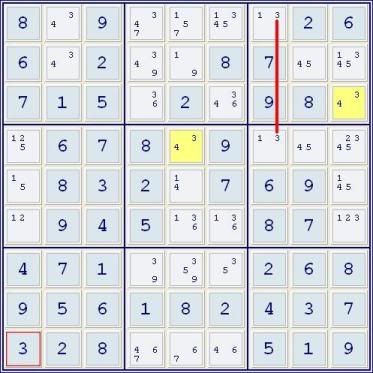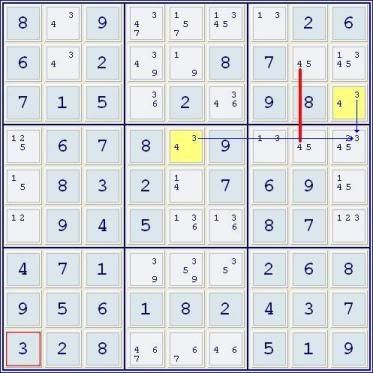| View previous topic :: View next topic |
| Author |
Message |
Luke451
Joined: 20 Apr 2008
Posts: 310
Location: Southern Northern California
|
 Posted: Mon Jul 11, 2011 11:27 pm Post subject: The W-Wing (A Graphic Primer) Posted: Mon Jul 11, 2011 11:27 pm Post subject: The W-Wing (A Graphic Primer) |
 |
|
Below is a step-by-step graphic primer to help with the identification and understanding of the w-wing. It was originally posted to the old Players’ Forum but lost during The Crash. I repost it at this time in the interest of restoring the record, and to help players new to the topic.
This primer covers only the most basic and commonly seen w-wing. Below are several links that get into some of the diversity.
W-Wing (Sudopedia)
The W-Wing (Keith)
2007 (early discussion/naming) |
|
| Back to top |
|
 |
Luke451
Joined: 20 Apr 2008
Posts: 310
Location: Southern Northern California
|
 Posted: Mon Jul 11, 2011 11:30 pm Post subject: Posted: Mon Jul 11, 2011 11:30 pm Post subject: |
 |
|
The W-Wing
A Graphic Primer
Step 1.
Find two identical bivalue cells not in the same house:

Step 2.
Locate a strong link on either value. One end of the link has to see one bivalue cell, the other end has to see the other bivalue cell. There happens to be a strong link on 3 that fits the bill:

It’s a “strong link” because there’s only two 3s in column 7. Note: neither end of the strong link touches either bivalue cell.
Step 3.
Now if the strong link is on one value, the elimination is on the other. So any (4) that can see both bivalue cells can be eliminated.
Row 4, column 9 cannot be 4, which is written like this : r4c9<>4.

Why does it work? One end of the red strong link must be a 3.
If there’s a 4 in r4c9, then we’d end up with no home for 3 in column 7:

One could do the same thing with the strong link on the 4:

Once again, if the strong link is on one value, the elimination is on the other.
So any 3 that can see both bivalue cells can be eliminated.
r4c9<>3.

2009, Luke451 |
|
| Back to top |
|
 |
|
|
You cannot post new topics in this forum
You cannot reply to topics in this forum
You cannot edit your posts in this forum
You cannot delete your posts in this forum
You cannot vote in polls in this forum
|
Powered by phpBB © 2001, 2005 phpBB Group
|








